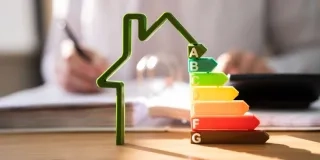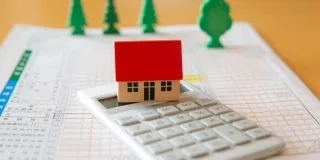Spain faces a colossal challenge, but also a unique opportunity: nearly 80% of our homes are energy inefficient, meaning they consume more energy than necessary, putting us in a difficult position regarding climate change. However, this situation offers us the possibility to lead a true revolution in energy efficiency, transforming not only how we live but also how we care for our planet.
A Look at the Problem
Imagine that 8 out of 10 houses or office buildings in our cities have an energy label of E, F, or G, meaning they are at the lowest levels of the efficiency scale. This is not just a number; it reflects a reality where we spend more, pollute more, and ultimately live less sustainably. These categories, the lowest on the efficiency scale, are equivalent to having a car that can barely go a few kilometers without spending a fortune on fuel.
Why Does It Affect Us So Much?
Owning a property or appliance with an energy label of E, F, or G has both environmental and economic impacts, both short and long term, mainly involving:
- Higher energy consumption: E, F, and G labels indicate low energy efficiency, meaning the building or appliance consumes more energy to perform its functions compared to those with higher efficiency labels (A, B, C). This results in increased consumption of resources such as electricity and gas.
- Increased expenses: Higher energy consumption leads to higher electricity, gas, or heating bills, which can affect the family or business budget.
- Lower market value: Homes with lower energy ratings may be less attractive to buyers or tenants, and their market value may be affected. This is due to a growing awareness of sustainability and the desire to live in more efficient and economically sustainable spaces.
- Update and renovation costs: To improve a property's energy efficiency and achieve a better rating, investment in renovation may be necessary, such as improving insulation or replacing windows. Although these upgrades generate long-term savings, they require initial investment.
- Impact on rental property profitability: Owners of homes with low energy ratings may face more challenges renting out their properties or be forced to reduce rental prices to compensate for the high energy costs that tenants will incur.
- Risk of obsolescence: As construction standards evolve towards sustainability and efficiency, properties with poor energy ratings face a higher risk of obsolescence, which can reduce their value and discourage investment.
The solution to energy inefficiency is within reach
The good news is that improving the energy efficiency of our homes is entirely possible and, moreover, beneficial on multiple levels. Imagine reducing your energy bill while helping the planet. Here are some ideas to improve your home's efficiency:
- Improve insulation: Keep your home warm in winter and cool in summer, reducing the need for air conditioning.
- Double-glazed windows: Minimize heat loss and save on energy bills.
- LED lighting: Replace traditional bulbs with LEDs for lower consumption and longer durability.
- Efficient appliances: Opt for those with high energy ratings to save on your bills.
- Smart thermostats: Automatically adjust the temperature, helping to improve energy consumption.
While these improvements involve initial costs, they can generate considerable savings in the long term and increase the value of your property. Ultimately, improving the energy rating is not only beneficial for the environment but also a smart economic decision that enhances the profitability and attractiveness of your home or office in the market.
The Future We Can Build
Energy efficiency is not just a label or a technical requirement; it is a way of life that we can adopt to improve our quality of life and ensure a greener and more sustainable future. Technology and innovation are our allies on this journey, offering us increasingly accessible tools to make our homes more comfortable, economical, and, above all, environmentally friendly.
If you want to learn more tips for improving your home's efficiency, check out our blog where you'll find the latest trends in sustainability.
















